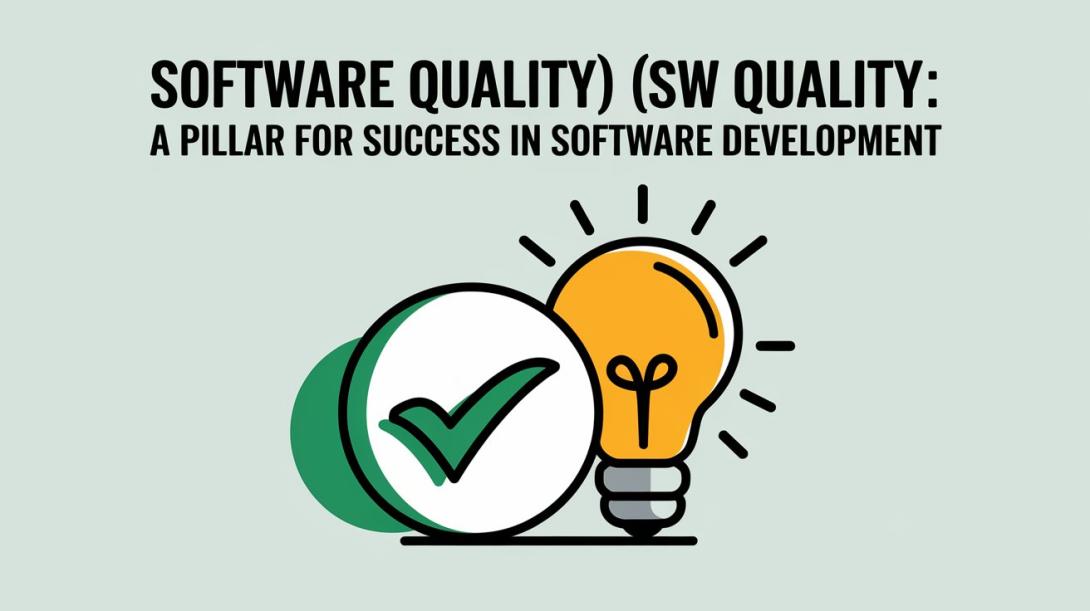
The success of applications and systems in the digital age is largely dependent on software quality, or SW quality. Delivering solutions that satisfy user expectations, operate dependably in a variety of scenarios, and support corporate goals is what software quality is all about. Superior software guarantees long-term cost effectiveness, lowers operational risks, and improves user experience.
Learn More: https://axonator.com/request-for-demo/
Software Quality: What Is It?
The degree to which software satisfies user needs, meets requirements, and performs well in its intended environment is referred to as software quality. Functionality, dependability, performance, security, and maintainability are just a few of its many qualities.
In order to guarantee the integrity of the program throughout its lifecycle, a combination of procedures, instruments, and best practices must be used to achieve software quality.
Essential Features of Functional Software Quality
The software must precisely and fully execute the tasks for which it was designed. Every functional criteria that was stated during the design stage should be satisfied.
Dependability
Reliable software can manage unforeseen situations with grace and perform flawlessly under normal circumstances.
Efficiency of Performance
Optimal performance, including quick response times and effective resource use, is provided by high-quality software.
Software that is easy to use should have straightforward navigation and intuitive interfaces.
Safety
Preventing unwanted access and safeguarding user data are essential elements of high-quality software.
Sustainability
One essential feature that guarantees software's adaptability throughout time is how simple it is to update, repair, or improve it.
Software Quality's Significance in Improving User Satisfaction
Good software builds loyalty and trust by meeting or beyond user expectations.
Savings on expenses
Bug patches and post-deployment maintenance are less expensive when problems are found and fixed early in the development process.
Observance of Standards
Legal and commercial acceptance are guaranteed when industry standards and regulatory criteria are met.
An edge over competitors
In a cutthroat industry, superior software sets a company apart and improves client retention and brand reputation.
Decreased Hazards
Software that is secure and dependable reduces the possibility of system malfunctions, data breaches, and interruptions to operations.
Methods for Assuring Software Quality: Needs Assessment
The cornerstone of high-quality software development is the precise definition of user requirements and corporate objectives.
Evaluations of Designs
Finding such problems before coding starts is facilitated by carrying out comprehensive design evaluations.
Checks for Code Quality
Code cleanliness, efficiency, and maintainability are guaranteed by enforcing coding standards and carrying out frequent peer reviews.
Software can be rapidly tested for security, performance, and functionality by developers using automated testing methods.
Testing by Hand
Automated tests could miss ideas from exploratory and user acceptance testing.
Continuous Deployment and Continuous Integration (CI/CD)
Software upgrades are integrated and deployed effectively without sacrificing quality thanks to CI/CD procedures.
Difficulties in Upholding Changing Requirements for Software Quality
Maintaining quality can be difficult when user needs or market demands change often.
Time Limitations
Shortcuts in testing or quality assurance may result from strict timelines.
Limitations of Resources
The quality assurance process may be hampered by a shortage of qualified staff or insufficient equipment.
Complexities of Integration
The development process may become more difficult if compatibility with third-party integrations or current systems is guaranteed.
Top Techniques for Increasing Software Quality:
Use Agile Approaches
Iterative progress and frequent feedback are key components of agile development, which enables teams to continuously adjust and enhance quality.
Make Use of Quality Management Resources
JIRA, Selenium, and SonarQube are examples of tools that efficiently track issues and streamline quality assurance procedures.
Pay attention to user feedback
Including users in the testing process aids in bringing the program into line with practical requirements.
Spend Money on Training
Maintaining development teams' knowledge of the newest methods and technology guarantees that they can produce solutions of the highest caliber.
Put Documentation First
Thorough documentation minimizes mistakes and misunderstandings by assisting developers and testers in fully comprehending the system.
Learn More: https://axonator.com/blog/software-quality/
Software quality is a continuous endeavor that calls for cooperation, vision, and meticulousness. Businesses may provide dependable, secure, and effective solutions that last over time by placing a high priority on quality at every stage of the software development lifecycle.
Investing in high-quality software is not only a technical requirement in today's increasingly digital environment, but also a strategic move that promotes customer satisfaction and business success.
About Axonator Inc:
At Axonator, our vision is simple yet powerful: to enable the world on mobile. We envision a future where every aspect of business and society is seamlessly connected through mobile devices. Our mission is to empower businesses worldwide to leverage the full potential of mobile technology, transforming the way they operate, communicate, and collaborate.
Contact:
Axonator Inc. (The World On Mobile)
Austin, TX, USA
USA: +1-716-274-8885
India: +91-8600-032-635
Email: support@axonator.com
Website: https://axonator.com/
